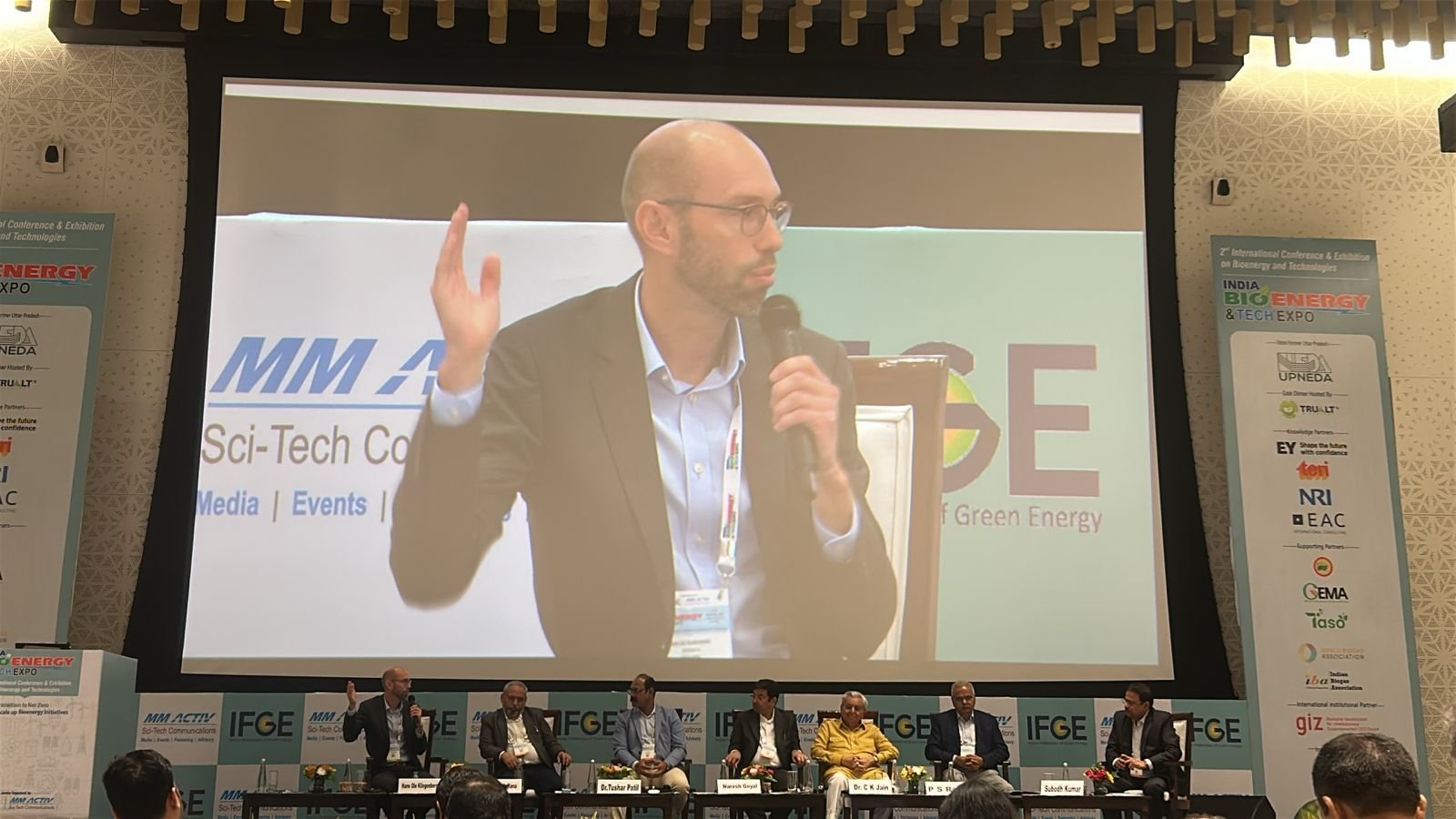Saturday, 11 October 2025

The insightful session on “Grain to Ethanol – Next Step, Challenges & Emerging Pathways” focused on scaling grain-based ethanol production while balancing sustainability, productivity, and economic viability on the second day of Second India BioEnergy & Tech Expo 2025.
The session highlighted that grain-to-ethanol adoption requires technology optimisation, policy support, and market development, enabling India to scale sustainably and reduce carbon intensity in fuels.
Subodh Kumar, Advisor to National Team, IFGE & ED, ValPro moderated discussions around oil, engine performance, SAF, and bio-oil, linking technology and policy perspectives. He briefed on past fuel quality issues and engine resilience, highlighting a need for industry to address public campaigns.
“Sulfur content in fuel has been significantly reduced over time. Engines in India have historically run-on poor-quality fuels, including burnt engine oil and solvents. Vehicles and engines are designed for a certain lifespan”, he said.
Naresh Goyal, Chairperson, IFGE: GEDA & Director, Pingaksh Beverages Pvt. Ltd. discussed the importance of ethanol blending in engines and the impact on cleaner fuel adoption.
Dr Tushar Patil, AVP – Corporate Strategy, Praj Industries explained enhancing productivity while reducing carbon footprint, use of corn and starch as raw materials, ethanol molecule efficiency, blending with diesel, and SAF integration. He focused on the strategies for the ethanol industry to adapt to future demands and become more viable. He also suggested that focusing on low-carbon ethanol production to qualify for export and align with global biofuel initiatives.
“There is a need to qualify feedstock as low carbon to meet future production requirements. To enhance industry viability exploring intercropping models and byproduct valorisation can be possible options,” he said.
He also emphasised alternative applications for ethanol, such as replacing diesel in gensets and using isobutanol and emphasising increasing the value of DDGs by reducing aflatoxin levels for export and poultry feed.
P S Ravi, Director, Downstream, Federation of Indian Petroleum Industry (FIPI) highlighted ethanol demand of 38 crore litres, comparing ethanol programs with other green initiatives, and emphasising material balance: 25 per cent DGCs, 30 per cent ethanol, 40 per cent CO₂, remainder others.
“The ethanol blending program has grown significantly, from 1.5 per cent to an estimated 1200 crore litres. Grain plays a pivotal and continuing role in the ethanol program.The immediate future (Phase 1) will see demand stagnation, requiring focus on operational efficiency and valorisation of by-products like DDGS and CO2. The Phase 2 (2026-2030) will involve exploring alternate starchy feedstocks and other blending options like isobutyl alcohol and corn oil for biodiesel”, he informed to audience.
Hans Ole K., VP, Novonesis discussed the economic impact of ethanol programs on GDP and income per capita, supporting previous panel insights.
Gulshan Singh Rana, Head, Market Development & Commercial Capability Bayer CropScience shared perspectives on market development and commercialization strategies across India, Bangladesh, and Sri Lanka.
Dr C K Jain, President, Grain Ethanol Manufacturers Association (GEMA) provided industry insights on grain ethanol production and future pathways for growth.